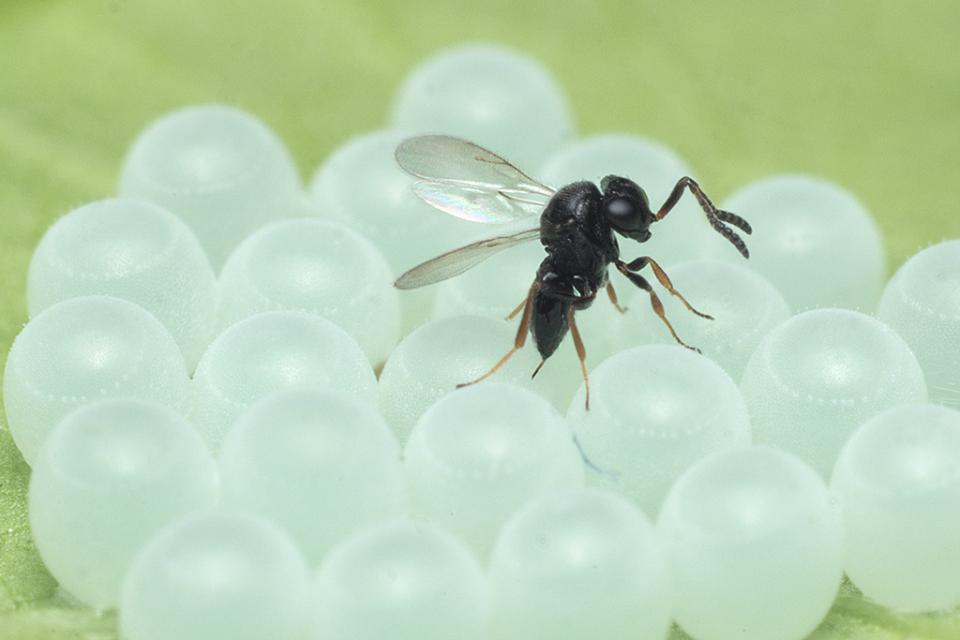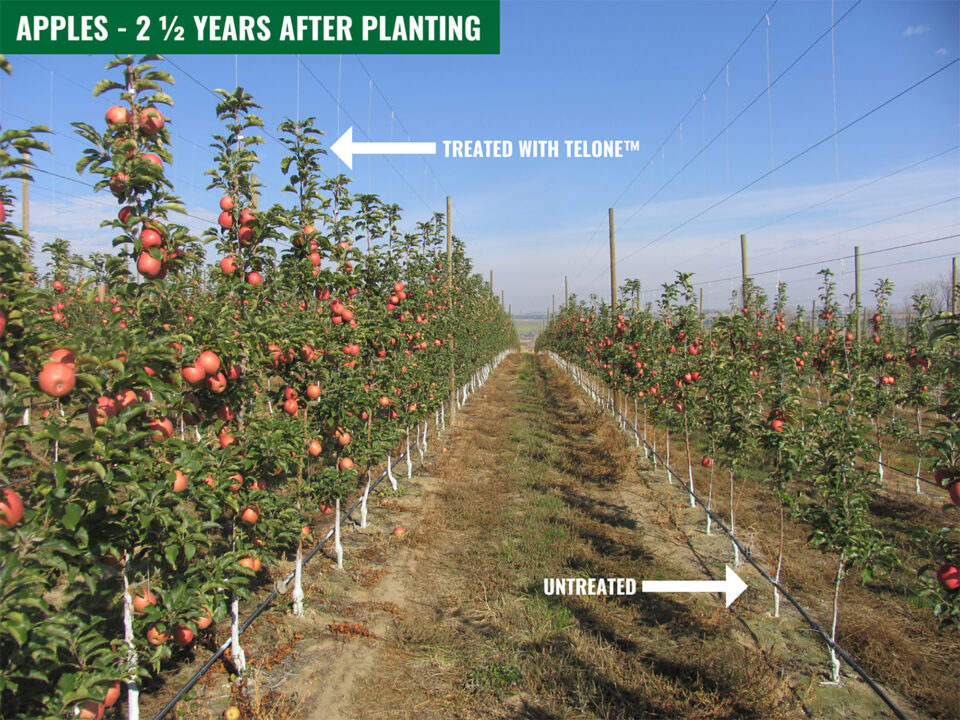New Study Looks at Best Timing for Samurai Wasp Use in Orchard Crops

An adult samurai wasp lays eggs in a mass of brown marmorated stink bug eggs. (Photo: Chris Hedstrom, Oregon Department of Agriculture)
The samurai wasp, Trissolcus japonicus, is a natural predator of the invasive brown marmorated stink bug. Females lay eggs inside of stink bug eggs. The wasp was discovered in Oregon’s Willamette Valley in 2016.
In a new study published in the Journal of Economic Entomology, researchers at Oregon State University (OSU) investigated the impacts of different insecticides commonly used in orchard crops on samurai wasp survival and reproduction.
The researchers studied samurai wasp compatibility with nine conventional and organic insecticides commonly used in integrated pest management in perennial crops, both in the laboratory and in three hazelnut orchards in the Willamette Valley.
They found the active ingredients in two classes of insecticides – neonicotinoids and pyrethroids – killed more samurai wasps than the others, both in the field and in the lab. Both classes are “broad-spectrum” insecticides, which are designed to kill or manage a variety of insects.
However, more than 50% of wasps survived contact with insecticides that are better targeted to control chewing insects, such as filbertworm larvae, in hazelnut. David Lowenstein, a postdoctoral research associate in Oregon State’s College of Agricultural Sciences and lead author on the study thinks the wasp shows great promise, especially in orchards near residential areas. In the last 2½ years, OSU has released the wasp at about 60 sites in the state. At about 40% of those sites, the wasp has survived into the following season.
“For someone who wants biological control for samurai wasp, it’s best to time it when you aren’t applying chemicals unless you are using those more targeted compounds,” Lowenstein says.
Nik Wiman, OSU Extension orchard crops specialist at the North Willamette Research and Extension Center (NWREC) in Aurora and Lowenstein’s advisor, is a co-author on the study. Other co-authors are Heather Andrews, an OSU faculty research assistant; and OSU horticulture graduate student Anthony Mugica, both members of the OSU orchards research lab.










